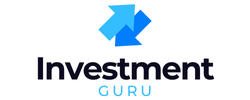Many lenders provide loan options with lower down payment requirements to make buying a home more affordable. But if your down payment is less than 20% of the purchase price, you’ll likely have to pay for private mortgage insurance (PMI).
PMI adds an extra cost to your monthly mortgage payments, which means your loan ends up being more expensive overall. The only real way to avoid it is by making a down payment of at least 20%.
Table of Contents
What is Private Mortgage Insurance (PMI)?
Private Mortgage Insurance (PMI) is a financial safeguard that protects the lender—not the borrower—if the borrower defaults on a mortgage. While it might seem unfair to pay for something that doesn’t benefit you directly, PMI plays a vital role in making homeownership more accessible, especially for first-time buyers.
In simple terms, if you’re unable to make a 20% down payment on a conventional mortgage, your lender sees your loan as risky. To offset that risk, they require PMI. It’s essentially your ticket into the housing market when you don’t have stacks of cash saved up.
How PMI Works in a Mortgage
Let’s break this down: PMI is typically added to your monthly mortgage payment. This cost doesn’t go toward your loan principal or interest. Instead, it goes to a private insurer who steps in to reimburse the lender if you default.
PMI is generally required until you reach at least 20% equity in your home. Once that threshold is hit, you can request its cancellation—or better yet, let it cancel automatically at 22% equity.
Types of PMI
Navigating PMI isn’t one-size-fits-all. Here are the main types:
- Borrower-Paid Mortgage Insurance (BPMI): Most common, paid monthly.
- Lender-Paid Mortgage Insurance (LPMI): Hidden in your interest rate.
- Single-Premium Mortgage Insurance: One-time upfront cost.
- Split-Premium Mortgage Insurance: Combination of upfront and monthly payments.
Each type suits different financial situations, so understanding the trade-offs is essential.
When Do You Need to Pay PMI?

If your down payment is less than 20% on a conventional loan, PMI is almost always required. The logic? Less money down means more risk for the lender. Until you prove you’re a solid investment (usually by building equity), you’re stuck with PMI.
How Much Does PMI Cost?
PMI usually costs between 0.3% and 1.5% of the original loan amount per year. So on a $300,000 loan, you might pay anywhere from $900 to $4,500 annually—or $75 to $375 monthly.
Factors influencing PMI cost include:
- Loan size
- Credit score
- Loan-to-value ratio (LTV)
- Type of mortgage
Borrower-Paid PMI (BPMI)
BPMI is the most transparent form of PMI. You see it every month on your mortgage statement, and the good news is—it’s cancelable. Once you hit that magic 20% equity mark, you can kiss it goodbye.
However, BPMI can stretch your monthly budget, so it’s not ideal for those tight on cash flow.
Lender-Paid PMI (LPMI)
LPMI might sound like a gift from your lender, but don’t be fooled—it’s baked into your interest rate. So instead of paying PMI monthly, you pay a higher interest rate over the life of your loan.
Pros:
- Lower monthly payments
- No separate PMI bill
Cons:
- Higher long-term cost
- Can’t cancel PMI without refinancing
Single-Premium PMI
This option allows you to pay your PMI as a one-time lump sum at closing. No monthly burden. It’s a great choice if you’ve got extra funds upfront or if a seller or lender is willing to cover it.
But beware: If you refinance or sell early, that payment is gone forever.
Split-Premium PMI
This hybrid model gives you a middle ground: a smaller upfront fee and lower monthly payments. It’s ideal if you have some, but not all, of the funds at closing.
It offers flexibility, which can be a lifesaver for budget-conscious buyers.
How to Remove PMI Early
Here’s the deal: once your mortgage hits 80% LTV, you can request PMI cancellation. At 78% LTV, it must be canceled automatically (under federal law).
You can also get an appraisal if you think your home has increased in value. If the numbers work out, PMI might be history.
PMI vs. FHA Mortgage Insurance
PMI is for conventional loans; FHA loans come with Mortgage Insurance Premiums (MIP). The key difference?
- PMI can be removed.
- MIP usually lasts the life of the loan unless you refinance.
How PMI Affects Your Monthly Mortgage Payment
It adds an extra line item, plain and simple. On a $250,000 mortgage, expect to pay an extra $100–$200 per month, depending on your credit and LTV.
Budgeting for PMI can be tricky, so factor it in before making an offer.
How Credit Score Influences PMI
A higher credit score = a lower PMI rate. That’s because lenders trust you more if you’ve shown financial responsibility.
Improving your FICO score can significantly reduce your PMI premiums—or eliminate the need for it altogether with a bigger down payment.
Loan Types That Require PMI
Conventional loans are the primary culprits. Government-backed loans like VA and USDA don’t require PMI—but may have other types of insurance premiums.
How to Avoid PMI Legally
Want to dodge PMI altogether?
- Put 20% down
- Get a “piggyback loan” (80/10/10 structure)
- Look for lender-paid PMI promotions
Each method has pros and cons, so crunch the numbers.
Refinancing to Eliminate PMI
If your home value has increased, refinancing can help you ditch PMI. Just make sure the new loan-to-value ratio is 80% or lower.
The Pros of Paying PMI
Surprise! PMI isn’t all bad.
- Lets you buy sooner
- Helps build equity faster
- Offers flexibility for first-time buyers
The Cons of Paying PMI
Still, it’s money out of your pocket:
- No benefit to you
- Reduces affordability
- Harder to build equity quickly
PMI Myths Debunked
- Myth: PMI protects the buyer.
- Truth: It protects the lender.
- Myth: You’re stuck with PMI forever.
- Truth: You can remove it.
- Myth: PMI is always monthly.
- Truth: There are multiple payment options.
How Lenders Use PMI
PMI gives lenders peace of mind. It protects them in case of borrower default, making them more willing to approve lower down payments.
PMI and First-Time Homebuyers
PMI is both a curse and a blessing. It raises costs, but without it, many buyers couldn’t get into homes. Used wisely, it’s a stepping stone.
How Long Must You Pay PMI?
The magic number: 78% LTV.
- Request cancellation at 80%
- Automatic cancellation at 78%
- Must be current on payments
Impact of PMI on Home Equity Growth
Paying PMI slows equity growth because part of your payment goes to the insurer—not your principal. But once it’s removed, your equity accelerates.
Alternatives to PMI
Not a fan of PMI? Consider:
- VA Loans – No down payment, no PMI
- USDA Loans – For rural properties
- Co-signers – Can improve LTV and avoid PMI
Tips to Minimize PMI Costs
- Boost your credit score
- Put more down
- Shop lenders
- Avoid LPMI if you plan to refinance
Private Mortgage Insurance (PMI)
Private Mortgage Insurance (PMI) is a reality for many homebuyers—but it doesn’t have to be a burden. When understood and managed wisely, PMI can actually open doors that would otherwise remain closed. Whether you pay it monthly or upfront, temporarily or long-term, it’s a tool—not a trap.
FAQs
- What is PMI in simple terms?
- PMI is insurance that protects the lender if you can’t pay your mortgage, usually required with less than 20% down.
- Can I avoid paying PMI?
- Yes, by putting 20% down, using a piggyback loan, or choosing loan types like VA or USDA that don’t require it.
- Is PMI tax deductible?
- In some cases, yes—depending on your income and when you took out your mortgage.
- Does PMI go toward my mortgage balance?
- No. PMI is a separate cost and does not reduce your loan principal.
- How can I get rid of PMI fast?
- Build equity by paying down your mortgage, or get a new appraisal if your home has appreciated.
- Does refinancing remove PMI?
- Yes, if your new loan-to-value ratio is under 80%, refinancing can eliminate PMI.
Conclusion
Private Mortgage Insurance (PMI) can feel like a necessary evil, but it’s also a powerful ally for aspiring homeowners. By understanding its nuances—types, costs, cancellation strategies—you can make informed choices that align with your financial goals. Don’t let PMI deter you from homeownership. Instead, use it smartly, plan for its removal, and watch your equity grow.
External Sources:


